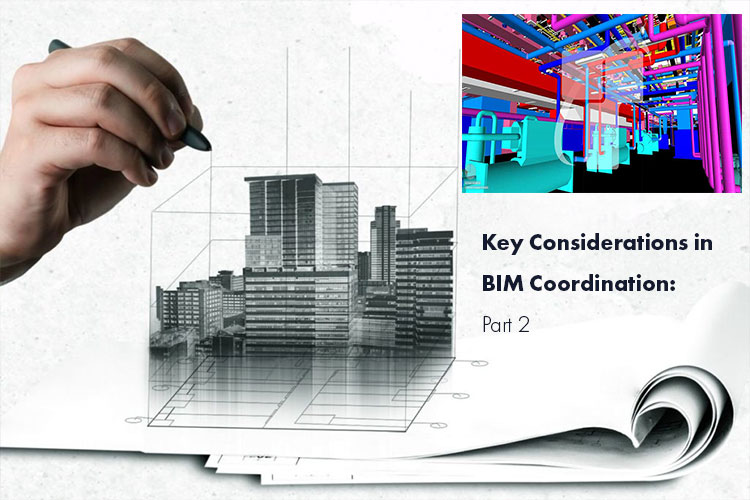Key considerations for a successful multidisciplinary BIM Coordination: Part 2

In the Part 1 of this blog we discussed what are Multi-disciplinary clashes, and the stages of BIM Coordination. We also discussed the importance of choosing the right software as well as Geo-referencing in detecting clash. Today we will be discussing how to set tolerances, extract clash reports and finally resolve clash for a successful construction process.
4. Setting Tolerances:
There are three types of clash which are detected in BIM Coordination Services. A hard Clash is when two objects occupy the same place. Soft Clash occurs when the objects are not given the correct structural and geometric tolerances and the workflow clash refers to the clash of scheduling or timeline. In any construction, a zero level tolerance is not feasible so the BIM Modeler needs to set a tolerance level which signifies the permissible extent of inherent variances. These acceptable tolerances need to be defined for example for a hard test type a tolerance level is set at 0.00 then it will ignore any clashes with a distance less than that value. Any clashes less than that value will be assumed to be negligible clashes and can be worked around on site. Setting tolerances is important as it defines what clashes will be detected.
5. Clash Reports:
Once Clash Detection is carried out these reports then need to be communicated to the relevant members. Each element in the Revit Model has an Element ID, in Navisworks the element is identified and its report sent to concerned stakeholder. A clash detection can also be run by selecting specific disciples like between specifically between electrical and mechanical. It is then very important that this information reaches the right source. For example, if there are a large number of collisions in the plumbing then it is a clear indication that the MEP engineer needs to be contacted. Using the information obtained it is then up to the engineers and the architects to advance and refine the BIM Models.
6. Clash Resolution:
Once the BIM Software identifies hard, soft and workflow clashes during the design phase. Once the clashes are identified immediate action can be taken to rectify them. Hard Clashes need to be resolved before the construction begins. A ‘soft clash’ occurs when an element isn’t given the spatial or geometric tolerances it requires or its buffer zone is breached. For example, under MEP BIM Services and Structural BIM, an air conditioning unit may require certain clearances to allow for maintenance, access or safety that a close placement steel beam would negate. Once the clashes are resolved, another clash detection report is carried out to ensure that clash has been sufficiently fixed. The aim is to not just identify the clash but also find constructive solutions to resolve the problem leading to a smooth construction process.
Conclusion:
To run a BIM Coordination is not a simple task and the BIM Modeler needs to have knowledge concerning several tools in the software. However, if effectively carried out then it reduces on-site errors, increases the production value, and ensures successful completion of the construction project.